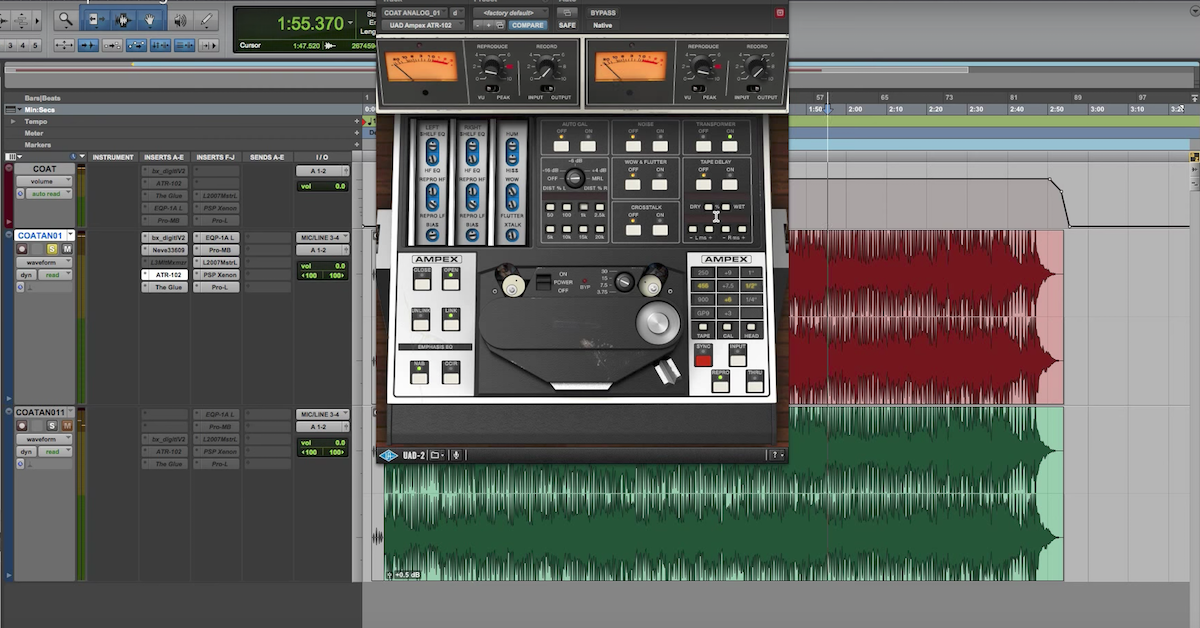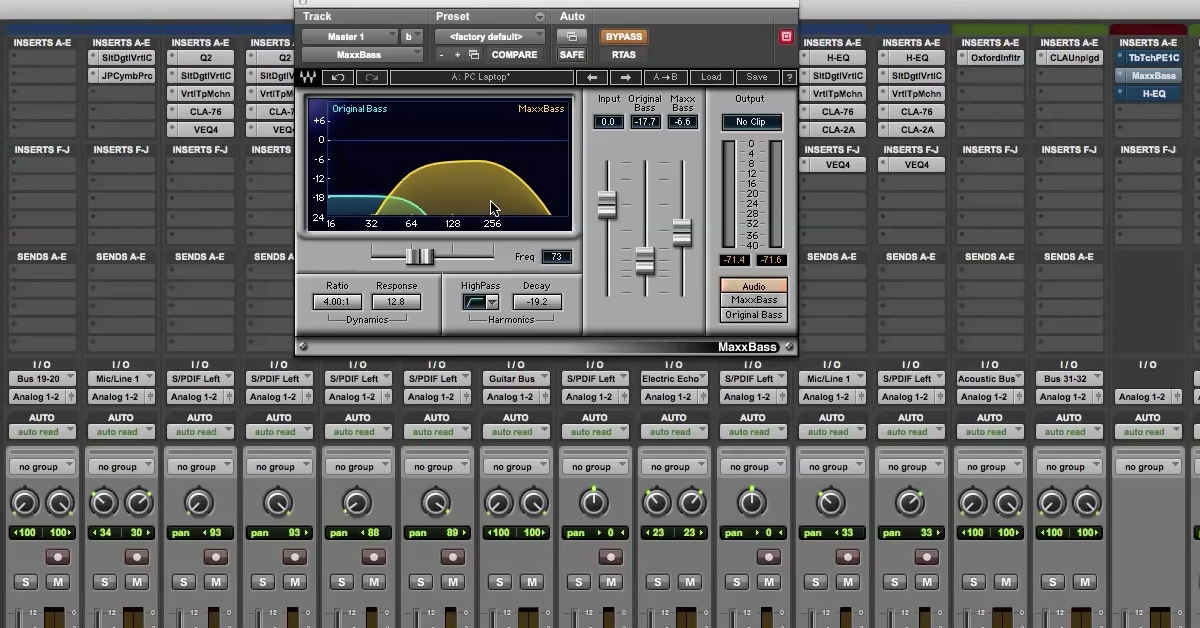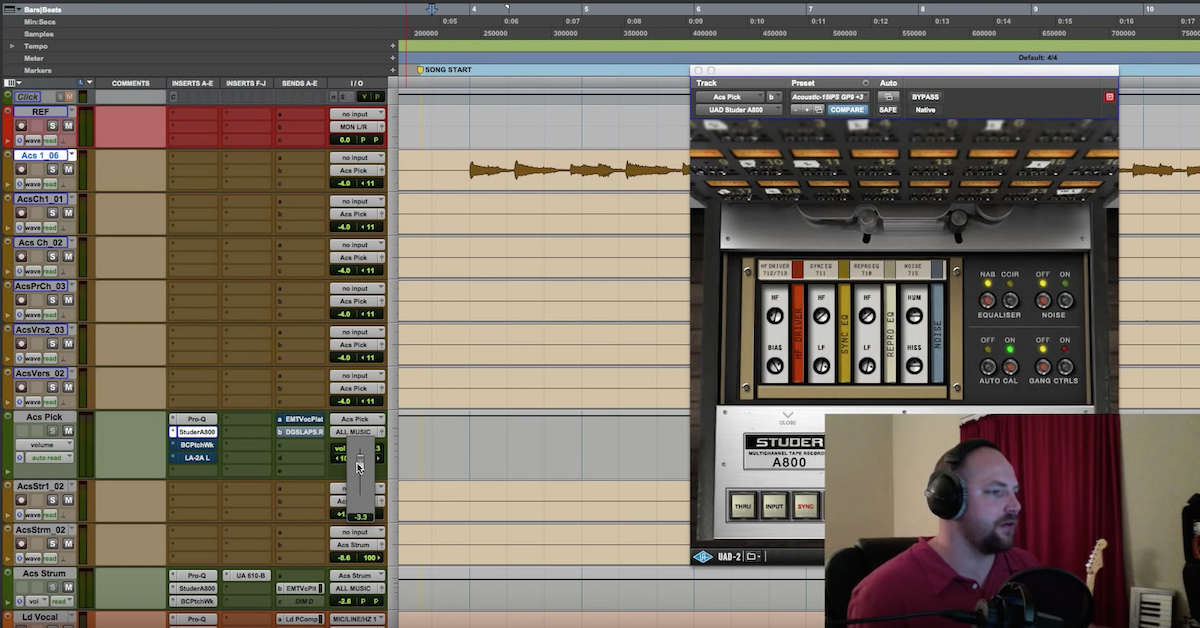13 Tips for Writing and Recording Cues for TV and Film
Article Content
Cutting cues for TV is quite a different method from making records. Time is of the essence. I wouldn’t say that quality doesn’t matter. It does very much. But I would say quantity and speed are definitely the priority.
This often means relying on sounds that you know how to produce fast. So spend time getting to know your tones and your setup.
What is a Cue?
The term originates from theater. Music was, and still is, used to tell the performers that something is coming up (hence, the term cue). This term has traveled from the stage to the screen. It’s not uncommon for the word cue to be used when referring to background music in TV or film.
Anytime you’re watching a TV show and you hear music, that’s a cue. In the TV/film industry, they use what are called cue sheets. These sheets log the music in order to properly track payment owed to the composers.
Here are some things that enter my mind when I’m cutting cues for TV as opposed to making a record.
1. Old Faithful
You should be able to capture basic sounds for each instrument quickly. Need an overdriven guitar? You should know how to get that immediately. Need a Beatle-like bass sound? Have it in your bag.
You don’t have to know every sound. That’s impossible. But do have a handful for each instrument that covers the style you’re writing for.
2. Space Man 2000
A lot of times when busting out cues, I’ll track the guitars with some reverb. This is where the Strymon Big Sky comes in. I place it at the end of my pedalboard and dial in the appropriate reverb for each track. The exception is if I want a stereo reverb sound. In that case, I wait until mixing.
Point is, I do my best to capture the sound as close to the final product as possible.
3. Looking for Treble?
Make all your EQ decisions up front. Does the guitar need to be brighter? Bass too muddy? Don’t fix it in the mix.
Sure, you may need to make a few adjustments as the mix evolves, but if you do it right, it should be minimal. Make it sound finished.
4. The Big Squeeze
Similar to EQ, I print with compression if I’m hearing it. It’s very common for me to put an LA-2A or Fairchild on an acoustic guitar. Set up the mic, listen, adjust, listen…done. No looking back.
5. Templates
It’ll take a little while to get a workflow established, but after producing some cues (about a baker’s dozen), you’ll start to see repetitive actions. This is a good time to set up a template with your most used tracks and plugins.
6. Extra Sauce
Sometimes I need to add strings or horns. You could set up another template with these instruments included. Or, another option is to create a session and name it “orchestra.” In this session, set up all your aux channels, instruments and samples. Then, save the session and store it somewhere that’s easily accessible. Now, when you need strings, you can simply import these settings from the “orchestra” session.
7. Fix as You Go
Insert all your crossfades immediately, especially if you use punch recording. Does a guitar chord need to fade out as the noise floor rises? Fade it. Don’t come back to it later.
8. Mix as You Go
Every time you add an instrument, think about its placement — both in volume and panning. You may have to make some slight adjustments as time goes on, but you should be close.
9. Compositional View
Think about the cue you’re recording. Don’t just listen to the parts in your head, listen also to how everything sounds together. As you’re composing, consider which ones are supporting parts and which ones are leading parts.
10. Center Cut
Keep as much as you can out of the center of the mix. Hard panning is your friend. Voiceovers (VOs) are panned in the middle. If you place too much guitar or piano in the middle, you’ll be competing with whatever voices are intended to be on top. I still put bass and drums in the center, but I tend to spread out other instruments.
11. Drum Loops
I’ve been working a lot with drum loops from The Loop Loft and Drums on Demand. They both offer really great sounding loops that are mixed, but not overhyped. They sound natural and the grooves feel great. They can save you a lot of time from drum programming.
12. DAW Hopping
I tend to use Pro Tools when I’m cutting records or doing session work. For cues though, I’ve switched to Ableton Live.
There are a lot of reasons why Ableton is good for cue work:
- I prefer the way MIDI works in Ableton.
- Time Stretching. Sometimes a loop or compositions need to be faster or slower. I find Ableton handles all of this better, and the tap tempo feature is also really great for composing.
- Fast composing. Sometimes I set up a mic and write a whole stream of riffs. Then, I’ll turn them into loops to construct into songs later. Ableton is great for auditioning loops before you drag them into a Pro Tools session.
13. The Performer
Avoid deep playlists when working on cues. Ableton doesn’t have playlists, so you’re better off just getting it right or doing your punch-ins on the fly. Keep a “what-you-see is-what-you-get” philosophy. Digging through playlists to edit later is a time-eater.
There are plenty of ways you can be creative in the fast-paced world of cues. Having a system in place allows you to concentrate more on composition.
Conclusion
I know this sounds vague, but here’s the real truth about composition — it’s a creative art. To compose great music requires imagination more than anything else.
Even if it’s not your intent to get into the world of composing cues, using your imagination is a great exercise for composition. It has definitely helped me to be less judgmental about my creativity.
Now, I save the judgment until after my idea is completed. This approach has followed me over to my songwriting projects. In general, I feel like I get stuck less these days.





